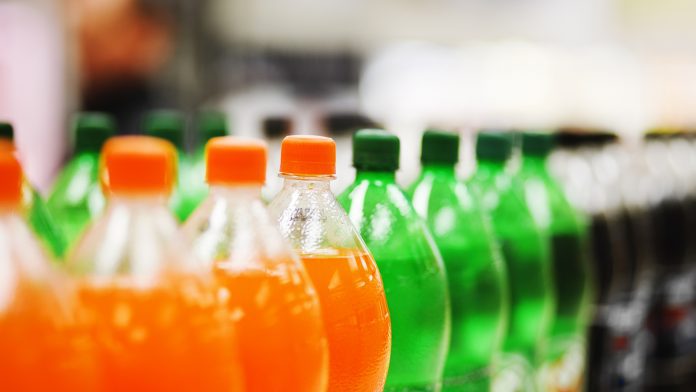
A new study has illustrated the impact of drinks with liquid fructose and a high-fat diet on short-term fatty liver disease prevalence.
Research carried out by the Faculty of Pharmacy and Food Sciences, the Institute of Biomedicine of Barcelona (IBUB) and the Physiopathology of Obesity and Nutrition Networking Biomedical Research Centre (CIBEROBN) studied whether drinks with liquid fructose cause short-term fatty liver disease.
The causation link of a high-fat diet and short-term fatty liver disease is not dominant enough; however, when combined with beverages with liquid fructose, the accumulation of fats in the liver accelerates and hypertriglyceridemia —a cardiovascular risk factor— can appear.
The study was published in Molecular Nutrition and Food Research.
The effect of fructose in the synthesis of fatty acids
Fructose is one of the most common sweeteners in the food industry; this simple sugar (monosaccharide) is obtained from corn syrup. Regardless of clear scientific evidence that found it can contribute to metabolic diseases, the food industry continues to add fructose into beverages, sauces, and processed foods.
To add to the existing adverse effects of fructose consumption, the new study found that the sweetener causes an increase in the synthesis of fatty acids in the liver, which is more decisive than the external introduction of fats through the diet. This could lead to the development of fatty liver disease.
“In high-fat diets which are supplemented with liquid fructose, this monosaccharide is able to induce an increase in the de novo lipogenesis —that is, the formation of fats through sugar— and an inhibition of the lipid oxidation in the liver”, said Professor Juan Carlos Laguna, from the Department of Pharmacology, Toxicology and Therapeutical Chemistry.
“In particular, fructose intake affects directly the expression and activity of the nuclear factor ChREBP. Once activated, this factor causes an increase in the expression of enzymes that control the hepatic synthesis of fatty acids”, he continued. “Parallelly, fructose intake reduces the activity of the nuclear receptor PPARalfa, which is the main responsible for the controlling of the expression of genes that code the enzymes involved in the fatty acid oxidation (mitochondrial and peroxisome) in the liver”.
As stated in the preclinical study, the combination of the saturated fat from the dietary origin and the induction of the endogen synthesis of fatty acids is what causes the emergence of fatty liver disease.
“Moreover, we are describing for the first time that fructose —unlike high-fat diets— increases the expression of the PNPLA3 protein, associated with the appearance of hypertriglyceridemia, a risk factor for cardiovascular diseases”, noted Núria Roglans, co-author of the study and member of the mentioned Department.
Fatty liver disease in humans
Historically, epidemiologic studies associated the consumption of drinks sweetened with fructose with the non-alcoholic fatty liver disease (NAFLD), a pathology for which there is no specific pharmacological therapy. In these patients, de nova lipogenesis contributes up to 30% of the lipids accumulated in the liver, while in healthy people, this synthesis brings only 5% of hepatic lipids.
The animal model characterised by the team could see potential interest in studying future drugs to treat non-alcoholic fatty liver disease (NAFLD). “People with this pathology have a higher endogenous synthesis of lipids in the liver than healthy people. Therefore, the effects described in this study might appear in humans as well”, noted the experts.
“Unfortunately —they continue— the fatty liver is the starting point for more serious pathologies, such as steatohepatitis and cirrhosis. It is a practically asymptomatic pathology, although in some cases, some mild unspecific digestive disorders can appear. Apart from following a healthy diet and physical activity, there is no efficient treatment against this pathology for now”.
The effects observed on fatty liver disease occurrence are only found when fructose is taken in its liquid form. “Regarding sweetened beverages, fructose is quickly absorbed, and it reaches the liver massively, producing the described metabolic alterations. To find a comparison, we could talk about the appearance of a fructose overdose when this is taken in sweetened drinks”, noted the team.
“However, when we eat fruit, the amount of taken fructose is a lot lower compared to a sweetened drink. Also, the process of chewing it and the presence of other elements in the fruit, such as fibre, slows down the absorption of fructose and its arrival to the liver”, concluded the authors.
























